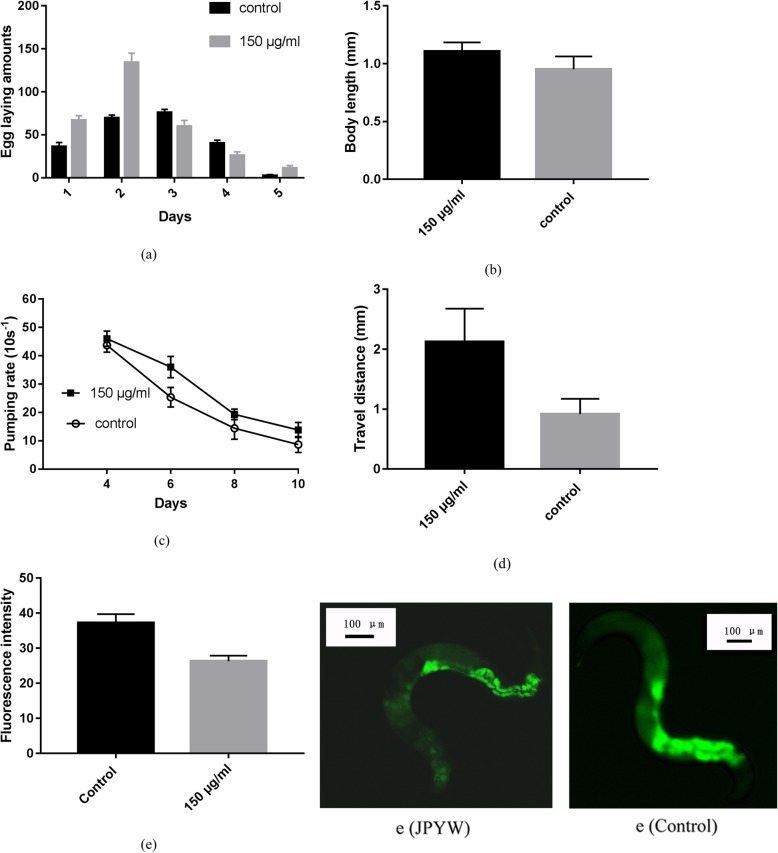Fig. 4.
Effect of JPYW on aging-related factors. a Daily and total reproductive outputs. The progeny were counted at the L2 or L3 stage. JPYW treatment significantly increased the total progeny number (297.4 ± 15.3 vs. 223.8 ± 6.3, n = 5, P < 0.01) compared to the control treatment. b For the growth alteration assay, photographs were taken of the worms, and the body length of each animal was analyzed. A small but significant change in body length was detected after JPYW treatment compared to the control treatment (0.953 ± 0.035 vs. 1.108 ± 0.024 mm, n = 10, P < 0.05). c JPYW slowed the decline in pharyngeal pumping during aging. Worms were treated with 150 μg/ml JPYW and the pumping rates (pumps per 10 s) of 10 animals were scored in two trials (untreated vs. treated: day 6, P < 0.05; day 8, P < 0.05; day 10, P < 0.05; n = 10). d Body movement in wild-type N2 nematodes. Worm body movement was evaluated under a dissecting microscope for 20 s. The differences between the JPYW-treated worms and controls were significant (0.92 ± 0.08 vs. 2.13 ± 0.18 mm, n = 10, P < 0.01). e Fluorescence intensity of lipofuscin and autofluorescence on the 10th day of adulthood. Compared to that in control worms, the intestinal lipofuscin accumulation in JPYW-treated worms was reduced (37.29 ± 0.54 vs. 26.32 ± 0.35, n = 20, P < 0.01)

